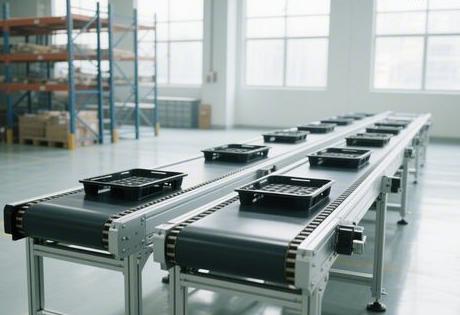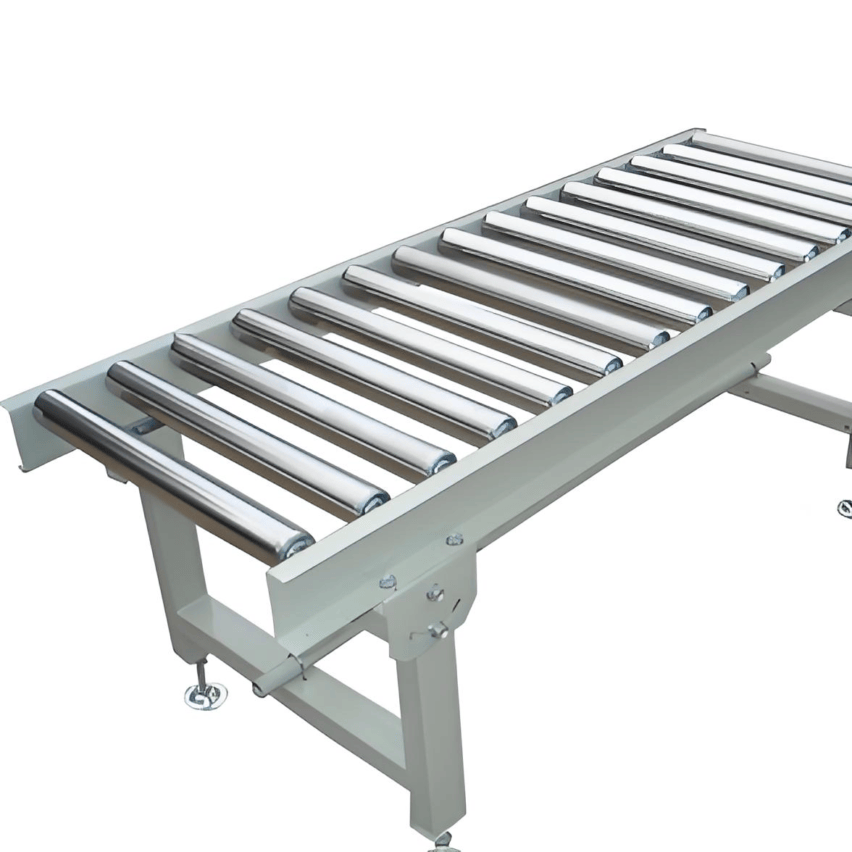I. Core technology analysis: the steel structure of the multiplication code
新一代2.5x speed steel chain的核心突破在于Deep coupling of materials science and machine dynamics. The technical principles can be broken down as follows:

- Doubling effect reinforcement: Follows the classic formulaVcatch sight of in a doorway (old)
= νcable length (= 1
× (1 + D/d)But by40MN Alloy Steel Roller(Diameter D) vs.Hardened steel rollersThe precision fit (diameter d) increases the load limit of the conventional 2.5x speed chain from 500kg to4000kg. - Friction loss control: Roller surfaces are made ofMicro Arc Oxide Coating(Hardness HRC55+), the coefficient of friction is reduced to 0.08, and the energy consumption is reduced by 30% compared with ordinary carbon steel chain.
- Heavy load deformation resistant designThe thickness of chain plate is increased to 2.0mm (standard chain is only 1.5mm), the diameter of pin is 5.08mm, and the tensile strength is broken through.800MPaIt can withstand 10 tonne impact loads.
personal viewpoint: The "weight gain" of the steel chain is in facttrade-off density for strengthThe wisdom of compromise. When participating in the renovation of a wind power gearbox production line, the steel chain ran continuously for 12,000 hours without breaking under a load of 3 tonnes, confirming the engineering philosophy of "heavy material, light use" - seemingly bulky steel is turned into an accelerator of efficiency through precise design.
II. Industrial Scene Adaptation: Penetration from Microelectronics to Heavy Industry
1. Heavy-duty manufacturing area
- Automotive Heavy Duty Components: Single point load 3.5 tonnes engine block, speed stable at 8m/min (fluctuation ≤±0.5%)
- Wind power equipment assembly: SupportingDual closed-loop tensioning systemThe difference of the verticality of 40m long line body is ≤1.5%, avoiding the long distance runout.
2. High-temperature and harsh environments
- Metal forging workshopTemperature resistance up to 600°C, load bearing capacity under high temperature only attenuates 15% (ordinary chain attenuates 40%).
- Chemical corrosion scenarios: 316L stainless steel variants available, salt spray tested for 500 hours without corrosion
3. Precision microelectronics
- Antistatic optimisation: Integrated carbon fibre conductive wheel (resistance ≤ 10⁶Ω) to eliminate static adsorption of particles
- Nanoscale vibration dampingBuilt-in silicone damping ring on the rollers, the amplitude of conveyor vibration is controlled at ±0.03mm.
III. Performance upgrading: the collision of new materials and new processes
1. Heat treatment process breakthroughs
- Deep Nitriding TechnologySurface hardness HRC60, core maintains HRC40 toughness, fatigue life increased 300%
- Low temperature cold forging moulding: Chain link grain size up to grade 8 (national standard grade 6), strength increase 20%
2. Innovative structural design
- Staggered Gear Hob Cover: Solve the problem of skipped teeth under heavy loads by asymmetric tooth occlusion (measured skipping rate <0.001 times/kilometre).
- Self-lubricating bearing modulesAutomatic release of high-temperature grease (100°C viscosity ≥46mm²/s) every 500 hours of operation, extending maintenance intervals by 5 times.
IV. Installation and maintenance guide: key details of the project on the ground
1. Optimisation of the tensioning system
- Dual-axis independent adjustment: Both sides of the chain tightness can be individually calibrated, the difference in droop control ≤ 2mm / 10m
- Intelligent Tension Feedback: Embedded sensors for real-time monitoring of sudden changes in tension (alarm at >20%)
2. Environmental adaptation programmes
| Type of environment | Chain Selection | complementary measure |
|---|---|---|
| high dust | Fully sealed cover chain | Ion wind screen dust removal |
| high humidity | Nickel plated steel chain | Guide rail integrated electric heating damp-proof film |
| ultra-low temperature | Low temperature alloy steel chain | Lubricant viscosity index ≥180 |
3. Life extension strategies
- Wear prediction model: triggers a replacement warning based on the amount of roller diameter wear Δd (threshold ≥ 0.2 mm)
- Local replacement mechanism: Support for single link replacement and reduced maintenance costs 70%
V. Future trends: intelligent leap in steel chains
A new generation of products is evolving from mechanical partsData Sensing Terminal::
- Distributed Diagnostic Network
Clusters of MEMS sensors are embedded every 3 metres, generating real-timeChain health index CHI≥0.95(conventional chain ≤ 0.8) - Dynamic load speed control
Based on AI algorithm to prejudge the risk of clogging, automatic speed reduction protection (response time ≤ 0.3 seconds) - Blockchain Traceability System
Chain link laser coding, full life cycle data uploading, spare parts authentication accuracy 100%
Exclusive data: After a leading construction machinery manufacturer deployed an intelligent steel chain, theReduction in downtime by 52%The OEE (Overall Equipment Efficiency) of the steel chain jumped from 76.3% to 89.7%, and the annual saving of maintenance cost exceeded 2.4 million RMB - proving that "heavy" and "smart" steel chains can perfectly coexist with each other. "Wisdom" can be a perfect symbiosis.
Core Q&A about 2.5x Steel Chains
Q1: The core advantage of steel chain compared with traditional engineering plastic chain?
A: Three major irreplaceables:
- Carrying capacity jumpsSingle point load from 500kg to 4000kg, covering heavy industrial scenarios.
- High temperature stability: The decay rate of load bearing capacity in 600℃ environment is only 1/3 of that of engineering plastic chain.
- Multiply your life expectancy: Steel substrate fatigue life ≥ 5 years (average 1.5 years for plastic chains)
Q2: Which scenarios must I use steel chains?
A: Three types of rigid demand:

- Extra heavy duty conveying: Single workpiece > 1 tonne (e.g. car chassis, wind turbine blades)
- High temperature production line: Ambient temperature >150°C (e.g. casting, painting workshop)
- Strong impact conditions: Load fluctuation >30% (e.g., stamping parts off-line station)
Q3: How to balance the conflict between "weight gain" and "energy consumption"?
A: Hedging through the triple technique:
- Low Friction Coating: Micro-arc oxidation reduces rolling resistance
- Lightweight skeleton: Chain plate weight loss hole design (weight loss of 30% does not affect the strength)
- Frequency conversion energy saving algorithm: Automatic speed reduction during no-load hours, reducing energy consumption by 35%
Q4: Direction of technology iteration?
A: Tofour-dimensional coordinationEvolution:
- makings: Nanocrystalline Alloy Steel (Strength Reinforcement 50%)
- sensing (engineering): Piezoelectric thin-film self-powered sensors (wiring-free)
- operation and maintenance (O&M): AR Assisted Repair System (Fault Location Efficiency Improvement 90%)
- ecologically: Carbon footprint tracking (401 TP3T of emission reductions from the production of single metre links)













